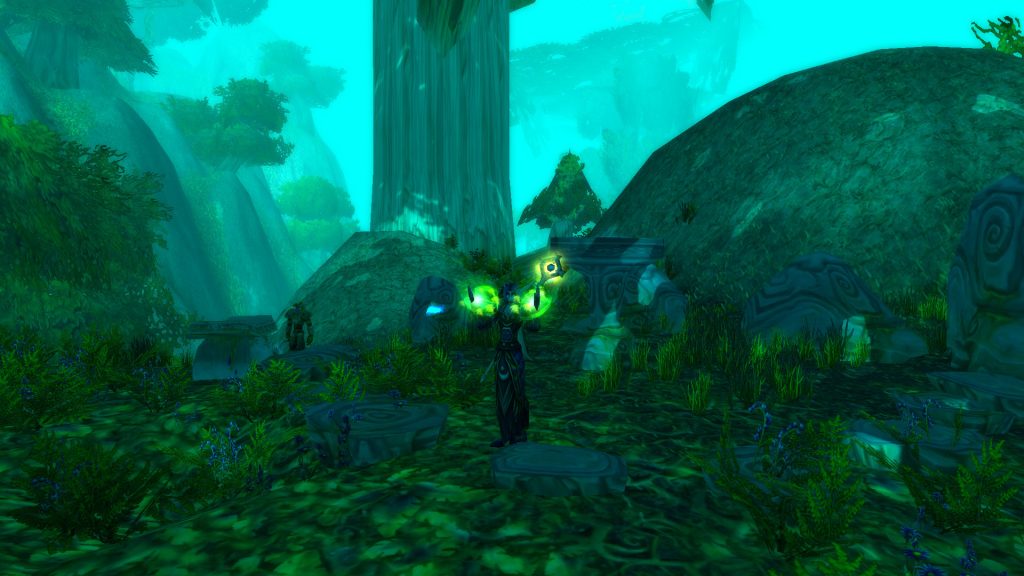- Author: Nevermore
- Date: January 12, 2025
- Updated: January 12, 2025
- Expansion: WoW Classic
Just like any other Healing specialization, Restoration Druids don’t necessarily have a Rotation per se, rather showcasing a priority order list for their Healing Spells. They have an active DPS rotation in case they choose to also deal damage besides utilizing their Utility and Healing Spells while their Healing Spells should always be used based on the situation at hand and the build they utilize. In addition, Restoration Druids are expected to downrank their spells due the the very high Mana Cost of their abilities, meaning that the rank you’ll use (sweet point) is entirely dependent on your Mana Pool.
Before we talk about the priority of Healing Spells, there are two main concepts that you must understand in case you are unfamiliar with Healinb specializations or Casters in general: Blanketing and Downranking. Blanketing means covering an entire raid, with either an AoE spell or a Single-Target spell as fast as possible. On the other hand, downranking refers to the act of using a lower rank to conserve Mana, even if the resulting Healing is lower than the maximum rank. The idea behind downranking is that the overall Healing Output will be higher since the Mana Cost is often not proportional to the Healing itself, with many Spells generating a similar Healing Value in between ranks while the Mana Cost is way lower.
In addition, Restoration Druids are expected to downrank their spells due the the very high Mana Cost of their abilities, meaning that the rank you’ll use (sweet point) is entirely dependent on your Mana Pool.
Healing Spells Priority Order
Nature’s Grace/Regrowth Build
- Cast Regrowth as much as possible (Main Spell)
- Cast Regrowth to trigger Nature’s Grace procs
- Cast Healing Touch (Complementary Spell)
- Use Healing Touch if you have a Nature’s Grace proc or together with Nature’s Swiftness
- Cast Rejuvenation (Situational-Raid Blanketing)
- Use Rejuvenation to pre-heal a target that is about to take huge damage
- Pair up Rejuvenation with Regrowth if your Mana Pool allows
With the Nature’s Grace variant of the build, you will want to mainly use Regrowth at both max rank and lower ranks as your main healing tool! The gist of it is to trigger as many procs of Nature’s Grace as possible and use them to provide both the tank and the raid with Regrowth. With this variation of the spell priority and build, you can also blanket the raid with lower ranks of Regrowth as long as your Mana Pool and overall Mana Regeneration are high enough.
Alternatively, you may only blanket the raid with Rejuvenation and also pre-cast it on important targets together with Regrowth for maximum efficiency, as long as your Mana Pool can last.
Meanwhile, the Healing Touch spell is complementary and used in conjunction with Regrowth. It acts as a secondary spell and it’s mainly used in a downranked version after applying Regrowth on a target or when Nature’s Grace procs. In addition, the spell is also used as an emergency button when combined with Nature’s Swiftness and used on its max rank.
Swiftmend Build
- Cast Swiftmend as often as possible (Main Cooldown)
- Prioritize using Swiftmend on targets affected by Regrowth and then Rejuvenation
- Cast Swiftmend before the last tick of a HoT expires to maximize Mana efficiency
- Cast Regrowth (Direct Heal/HoT)
- Cast Rejuvenation (Main HoT) to blanket the raid and provide moderate HoTs
- Cast Healing Touch (Situational)
- Cast Healing Touch if your tank requires a large burst of Direct Healing
- Cast Healing Touch + Nature’s Swiftness in emergencies
The Swiftmend build is somewhat different than the Nature’s Grace variant, yet it keeps mostly the same priority as it. While you won’t be using Regrowth to fish for procs anymore you will use it for its high Critical Chance and HoT effect which provides consistent healing! With this variant, you may also choose to use Swiftmend before the very last tick of Regrowth to benefit from the full effect! This is done specifically to both conserve mana and provide substantial healing.
In the same idea, Swiftmend will also be used with Rejuvenation, especially when blanketing the raid. Since there is no Nature’s Grace, you won’t be able to reduce the cast duration of spells, but Swiftmend somewhat makes up for it, especially since it has a low cooldown.
This time, Healing Touch is situational and depends on the encounter itself. You will mainly want to use it specifically for healing tanks, although you will want to de-rank it to obtain maximum efficiency. In addition, you will still want to use Healing Touch + Nature’s Swiftness at max rank for emergency situations. Consider macroing Healing Touch + Nature’s Swiftness and thinking of it as your “Panic Button”!
Offensive Spells Rotation
- Cast Insect Swarm and Upkeep the effect!
- Cast Moonfire (Main Damage)
- Recast it after Moonfire expires
- Cast Starfire (Situational)
- Only use Starfire if you play the Nature’s Grace build with either one of the Vengeance/Improved Starfire talents
Even if you play the role of a Healer as a Restoration Druid, there are certain offensive spells that you will want to use to both aid the raid and provide a minimal Damage Output. The best examples are instant-cast spells that don’t require you to lose time on channeling, effectively allowing you to instantly swap to Healing Spells.
You will want to upkeep Insect Swarm on the target at all times, not due to its damage part, but due to its debuff which reduces the target’s chance to hit a target by 2%. Since this debuff works on raid bosses as well, you will always want to use it. You will want to do the same with Moonfire and refresh it whenever your raid or tanks don’t require any healing, as long as you don’t dampen your mana.
The Nature’s Grace variant of the build also uses Starfire on certain encounters to aid the raid with the overall Damage Output. This option is better for builds that use Improved Starfire to further reduce the cast time!
Utility Spells
Utility
- Gift of the Wild/Mark of the Wild (Upkeep it)
- Upkeep Faerie Fire
- Upkeep Insect Swarm
- Innervate (On high-priority targets)
- Rebirth (Only on targets called out by the Raid Leader)
- Thorns (Always upkeep on Tanks)
- Abolish Poison (Use it to dispel Poison effects)
- Remove Curse (Use it to dispel Curse effects)
- Entangling Roots (If the area allows it)
In terms of Utility, Restoration Druids bring special utility when compared to other Healing specializations. Unlike all the other Healing specializations that can increase the armor value of tanks through specific effects, Restoration Druids can’t offer the same thing. Instead, they bring unique buffs such as Insect Swarm and Insect Swarm, along with the very well-known Innervate and Rebirth.
By far, the strongest and most desired ones are Rebirth and Innervate! The former is the only Battle Ressurection spell in the entire game while the latter is the best Mana Regeneration tool. Ideally, you will only use both of them according to the calls of your Raid Leader, prioritizing the most important targets. However, if your raid is stacked, you may consider using Innervate on yourself.
Gift of the Wild/Mark of the Wild should have a 100% uptime. Thorns should only be used on tanks since the Threat Generation the spell brings is actually surprisingly high.
Abolish Poison and Remove Curse are situational in general, and used only in specific encounters that require them!
Sadly, while Entangling Roots can be a great Crowd Control tool, it is limited by the terrain type you find yourself in, meaning that it won’t be useful in most Raids or Dungeons since it requires you to be “Outside” to cast it. In case you can cast it, make sure to use it since it can be a great CC tool.


